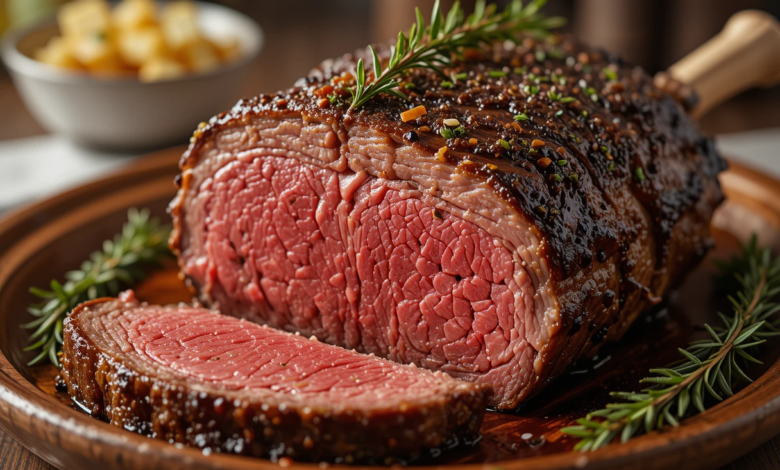Rosbif: A Culinary Classic Loved Worldwide

Rosbif, often referred to as “roast beef” in English-speaking countries, is one of the most iconic and beloved dishes in Western cuisine. Known for its rich flavor, tender texture, and versatility, rosbif has earned a place on dining tables around the globe. Whether served as the centerpiece of a Sunday dinner or prepared for a festive occasion, this dish never fails to impress. In this article, we’ll delve into the history, preparation techniques, and cultural significance of rosbif, along with tips to perfect this classic recipe. You know about theglobespot.
The Origins of Rosbif
The term “rosbif” originates from the French language, a playful nod to the English obsession with roast beef. Historically, roast beef became popular in England during the 18th century, especially among the working and middle classes. It was often served with potatoes, vegetables, and Yorkshire pudding, forming the cornerstone of the traditional Sunday roast.
The dish’s roots can be traced back even further to medieval times, when meat roasting over open flames was a common cooking method. Over time, advancements in cooking techniques led to the refinement of the recipe, with a focus on preserving the natural juices and flavors of the beef.
How to Prepare the Perfect Rosbif
Achieving a perfectly cooked rosbif requires careful attention to detail. Here are some essential steps to master this culinary classic:
- Choose the Right Cut:
The best cuts for rosbif are prime rib, sirloin, or tenderloin. These cuts are well-marbled, ensuring a juicy and flavorful result. - Season Generously:
A simple yet effective seasoning includes salt, black pepper, garlic, and fresh herbs like rosemary or thyme. For extra depth, marinate the beef overnight with olive oil, red wine, and a blend of spices. - Sear for Flavor:
Before roasting, sear the beef in a hot skillet to create a golden-brown crust. This step locks in the juices and enhances the flavor. - Roast to Perfection:
Preheat your oven to 200°C (400°F) and roast the beef until it reaches your desired level of doneness. Use a meat thermometer to ensure accuracy:- Rare: 50°C (120°F)
- Medium-Rare: 57°C (135°F)
- Medium: 63°C (145°F)
- Well-Done: 71°C (160°F)
- Rest Before Slicing:
Allow the beef to rest for at least 10-15 minutes after removing it from the oven. This ensures that the juices redistribute evenly, resulting in tender slices.
Serving Suggestions
Rosbif pairs beautifully with a variety of sides. Traditional accompaniments include roasted vegetables, mashed potatoes, and a rich gravy made from the beef drippings. Yorkshire pudding, a fluffy and savory bread-like dish, is another classic addition. For a more modern twist, consider serving rosbif with horseradish cream, red wine reduction, or even a fresh arugula salad.
Cultural Significance of Rosbif
Rosbif transcends being just a dish; it’s a cultural symbol. In England, roast beef is so revered that it inspired the patriotic song “The Roast Beef of Old England,” celebrating its association with strength and tradition. Across Europe, particularly in France, “rosbif” is often used as a playful nickname for the English, reflecting its deep connection to their culinary identity.
Today, rosbif has found its way into global cuisine, with regional variations adding unique flavors and techniques. From the Argentine asado de tira to the Italian arrosto di manzo, roast beef continues to inspire chefs and home cooks alike.
Tips for Storing and Using Leftovers
Rosbif leftovers are incredibly versatile. Store them in an airtight container in the refrigerator for up to three days. You can use the sliced beef for sandwiches, salads, or stir-fries. Thinly sliced rosbif also makes an excellent filling for wraps or tacos, adding a gourmet touch to quick meals.
Conclusion
Rosbif is more than just a meal; it’s a celebration of flavor, tradition, and culinary craftsmanship. Whether you’re cooking it for a special occasion or a comforting family dinner, this dish is sure to impress. With the right techniques and a little patience, anyone can master the art of rosbif and enjoy its timeless appeal.


